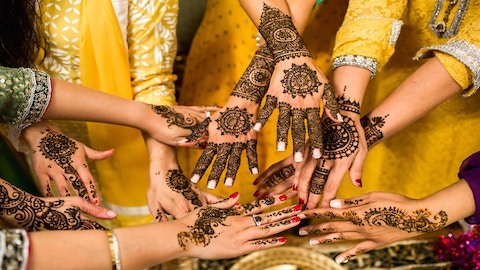India's third gender

Nonbinary identities may seem like a new phenomenon in Western culture, but that’s not the case in other parts of the world. In India, a third gender identity known as hijra has been intertwined with Indian culture for thousands of years, with hijras holding a prominent place in some of the most significant ancient Hindu texts.
Prior to British rule, hijras enjoyed a degree of acceptance in Indian society, playing a key role as performers at weddings and other community celebrations. However, the colonial era was marked by criminalization and persecution, and today’s hijras—who include eunuchs, transgender persons, and intersex individuals—continue to occupy an uneasy space in Indian culture. Many are forced to eke out a living through begging or working as sex workers.
Efforts to gain legal protections took a significant step forward in 2014, when the Supreme Court of India officially recognized hijras as a third gender. In his ruling, one of the two judges on the Supreme Court summarized the ruling with this statement: “Recognition of transgenders as a third gender is not a social or medical issue but a human rights issue” (BBC News, 2014, para. 9). This was an important step forward in terms of basic legal rights for hijras. But it is important to note that not all transgender and intersex individuals agree with the ruling. That's because many intersex and transgender persons in India identify as men and women and want to be recognized as such. They reject the idea that they constitute a third gender.
FEATURED CONTENT
Check out this overview by The Culture Trip to learn more about the hijras’ significance over thousands of years of Indian history.
https://theculturetrip.com/asia/india/articles/a-brief-history-of-hijra-indias-third-gender/
British imperialists were highly skeptical of hijra identities and culture. Learn more about the persecution and criminalization that plagued hijras under colonial rule in this BBC article.
References:
Biswas, S. (2019, May 31).How Britain tried to 'erase' India's third gender. BBC News. https://www.bbc.com/news/world-asia-india-48442934
India court recognises transgender people as third gender. (2014, April 15) BBC News. https://www.bbc.com/news/world-asia-india-27031180
Nambiar, S. (2017, January 1). A brief history of Hijra, India’s third gender. Culture Trip. https://theculturetrip.com/asia/india/articles/a-brief-history-of-hijra-indias-third-gender/
Dee
Who is Dee?
Gender Identity
 Our core sense of who we are as a man, a woman, a mixture of both, or neither.
Our core sense of who we are as a man, a woman, a mixture of both, or neither.
Gender Expression
 How we show up in the world through choices like clothing, hair style, mannerisms or tone of voice.
How we show up in the world through choices like clothing, hair style, mannerisms or tone of voice.
Attraction
 How we feel toward others sexually, romantically and/or emotionally.
How we feel toward others sexually, romantically and/or emotionally.
Biological Sex
 Physical attributes such as reproductive organs and genitalia, chromosomes, genes and hormone levels.
Physical attributes such as reproductive organs and genitalia, chromosomes, genes and hormone levels.
Explore More
Learn more about the status of hijras in Indian society today, as well as their long history in Indian Hindu and Muslim culture, in this article published by the New York Times Hylton, S., Gettleman, J., & Lyons, E. (2018, February 17).The peculiar position of india’s third gender. The New York Times. Retrieved from https://www.nytimes.com/2018/02/17/style/india-third-gender-hijras-transgender.html
